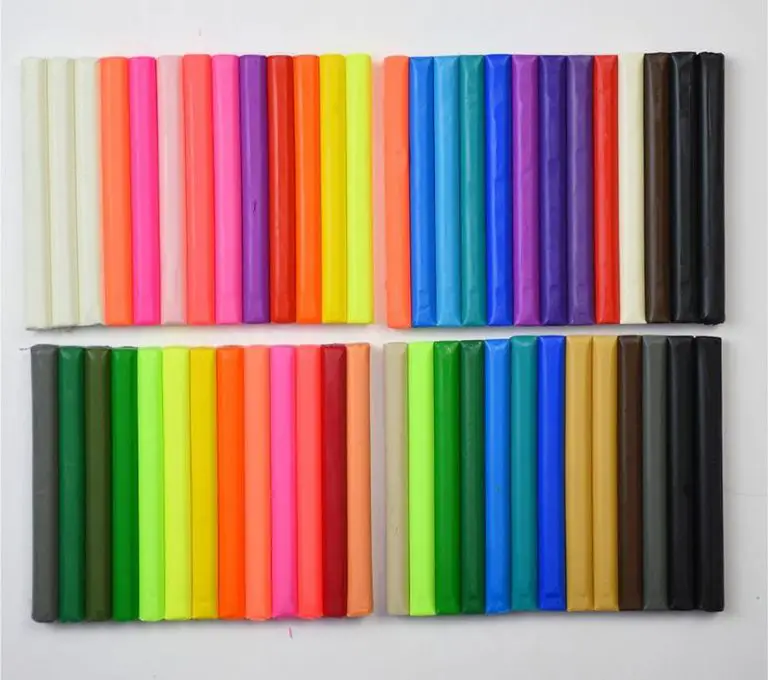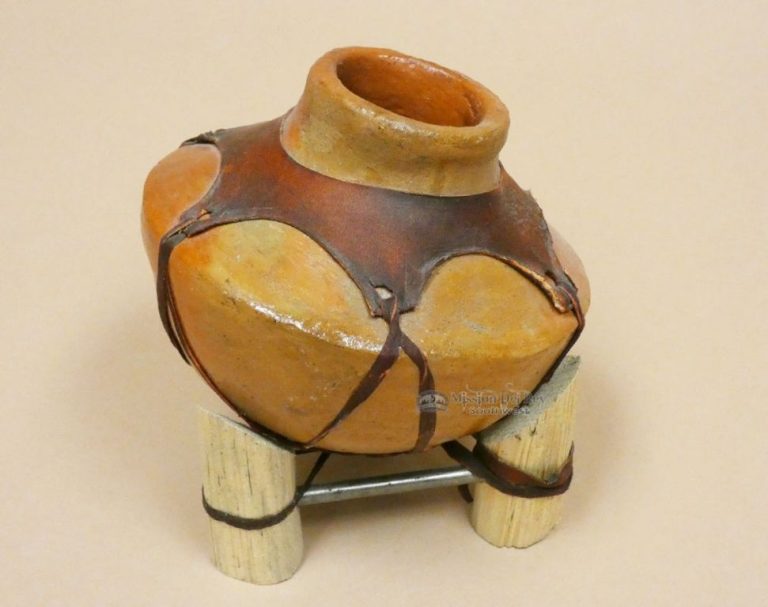What Are The Utensils Made Of Clay?
Clay utensils are tools, containers, and cookware made from clay. Clay has been used to create utensils and pottery for thousands of years, dating back to ancient civilizations. The oldest known clay vessels were found in China and Japan, dating back over 10,000 years. Clay was an ideal material for early humans because it could be easily shaped when wet, and became hard and durable when fired in a kiln. Clay utensils were a revolutionary technology that allowed for cooking over fire and storing foods and liquids.
Types of Clay Used
Clay utensils are made from different types of clay that provide unique properties. The most common types of clay used are:
Terracotta
Terracotta clay is an unglazed, porous clay that is usually red-orange or brownish in color. It is made from clay rich in iron oxide. Terracotta clay is one of the most ancient clays used for pottery and utensils. It produces sturdy but heavy and absorbent utensils.
Earthenware
Earthenware is a common clay type that is fired at lower temperatures than other clays. It produces more porous utensils that are lighter in weight than stoneware and less fragile. Earthenware can be glazed or left unglazed.
Stoneware
Stoneware clay is fired at high temperatures, which makes it less porous and more durable than earthenware. Stoneware clay utensils have excellent thermal resistance and can withstand repeated use. They are non-absorbent and resistant to acids.
Porcelain
Porcelain clay produces delicate, white, and translucent tableware. It is made by firing a mixture of clays at very high temperatures. Porcelain clay utensils are less porous, smoother, and more durable than stoneware and earthenware.
Clay Pottery
Clay pottery refers to objects made from clay that are fired in a kiln to harden them. Some of the most common types of clay pottery utensils include:
Bowls
Clay bowls have been used for thousands of years for serving food and drink. They come in a vast range of sizes and styles, from small ramekins to large serving bowls. Clay bowls can be left unglazed or finished with colorful glazes. Their natural porosity makes them ideal for soaking up sauces and juices.
Plates
Clay plates are an essential dining ware found in many cultures. From flat plates to ones with raised rims, clay plates hold and present foods in an attractive way. Clay plates can be decorated with stamped or incised patterns, left plain, or finished with glazes.
Cups
Clay cups and mugs are perfect for hot and cold beverages. Their insulating properties help maintain the temperature. Styles range from simple functional cups to elaborate ones with handles, spouts, and decorative glazes. The absorbent clay material allows the flavor to develop as tea or coffee is drunk from the cup.
Pots
Clay pots have a multitude of culinary uses, from cooking soups and stews to baking casseroles and roasting meats. The unglazed terra cotta variety impart an earthy flavor while glazed pots allow for easy cleaning. Pots come in round and oval shapes with handles or small pour spouts.
Storage Jars
Clay’s natural sealing ability makes it wonderful for storage jars. From small spice jars to large jugs, these vessels keep foods fresh. Storage jars often have narrow openings, handles for carrying, and lids to seal. Glazing the interior prevents permeability and odor absorption.
Clay Cookware
Some of the most popular clay cookware include tagines, bean pots, cazuelas, and slow cookers. Clay’s ability to retain heat makes it an ideal material for braising, simmering, and slow cooking.
Tagines are Moroccan clay pots used to simmer aromatic stews and vegetables. The conical lid of the tagine allows condensation to drip back into the dish, keeping it moist. Tagines are great for making flavorful braised meats, vegetable ragouts, and rich Moroccan stews.
Bean pots are round clay pots used for baking beans slowly over many hours. The porous clay evenly distributes heat, resulting in tender perfectly cooked beans. Bean pots can be used on the stovetop or in the oven.
Cazuelas are Spanish clay pots that resemble casserole dishes. They have wide flat bottoms and short sides, making them excellent for cooking rice, stews, and oven-baked dishes. The clay browns the bottom layer of rice, adding delicious crispy bits.
Clay slow cookers combine modern convenience with traditional clay cooking. The thick unglazed clay gently simmers stews, soups, and roasts over several hours. Using a clay slow cooker results in fork-tender meats and concentrated flavors.
Advantages
Clay utensils offer several advantages over metal, plastic, and other materials. Clay is made from natural raw materials and free of chemicals, making clay utensils safe and eco-friendly. The porous nature of clay also provides some useful benefits:
Natural Material: Clay pots and pans are crafted from natural clays, free of potentially harmful chemicals found in metal cookware. Unpainted, unglazed clay is completely safe to use.
Eco-Friendly: Clay is a renewable and reusable resource. Clay utensils are environmentally sustainable, especially compared to disposable plasticware. They can be composted at the end of their lifespan.
Safe: Clay does not react with acidic foods during cooking the way metal can. Clay utensils do not leach chemicals, lead, or other toxins into food.
Heat Retention: The thick walls and tight pores of clay efficiently retain heat and distribute it slowly and evenly. This makes clay excellent for cooking tasks like baking bread or slow braising meats.
Disadvantages
Clay utensils have some drawbacks that should be considered before purchasing and using them. The main disadvantages are that clay utensils can be fragile, heavy, and require seasoning.
Clay is a porous material that can crack or break if dropped or mishandled, making clay utensils more fragile than metal or plastic alternatives. Small hairline cracks may allow food and liquid to seep into the clay. Repeated freezing and thawing can also lead to cracks as the water expands and contracts within the material. Thus, clay utensils require more gentle care when handling and cleaning.
Due to the dense nature of clay, these utensils can be quite heavy. A simple clay bowl may weigh twice as much as a plastic or metal one of the same size. This makes clay less ideal for repetitive tasks that require lifting and maneuvering the utensils frequently.
Finally, clay utensils typically require seasoning before their first use, similar to cast iron cookware. This involves coating the inside surfaces with oil and heating to polymerize the oil into a natural non-stick finish. Without proper seasoning, clay can impart a gritty texture and absorb liquids and flavors. The seasoning process must also be repeated periodically to maintain the non-stick patina over time.
Clay Utensil Maintenance
Properly caring for clay utensils is important for preserving their useful lifespan. Here are some tips for washing, drying, storing, and seasoning clay utensils:
Washing
Wash clay utensils by hand using warm water and a soft sponge or dishcloth. Avoid abrasive scrubbers that could scratch the surface. Use mild dish soap and wash gently to remove any food residues. Rinse thoroughly afterwards.
Drying
Allow clay utensils to air dry completely before putting them away. Do not use harsh drying methods like a dishwasher or towel drying, which could cause cracking. Let the clayware sit out until no moisture remains.
Storing
Store clay utensils in a dry place once fully dried. Avoid exposure to moisture which could damage the clay over time. Store pieces separately or padded with towels to prevent scratches or chips.
Seasoning
Season unglazed clay pots and pans before first use by coating with a thin layer of cooking oil and letting it soak in for a few hours. This helps seal the pores. Occasionally re-season during use to keep them conditioned.
Clay Utensils Around the World
Clay utensils are used around the world for cooking, serving, and eating food. Some of the most notable clay utensils come from Japan, Spain, and Morocco.
Japan – Mushi-tsuki
Mushi-tsuki are Japanese steamers made from clay that are used to steam rice and other foods. They consist of two parts – a bottom steamer dish that holds water and a top dish with holes that holds the food. Mushi-tsuki steamers allow the food to cook gently and absorb moisture, resulting in fluffy rice and juicy dumplings.
Spain – Cazuela
Spanish cazuelas are wide, shallow clay cooking vessels used for braises, stews, and soups. They distribute heat evenly, resulting in tender, flavorful meats and vegetables. A cazuela goes from stovetop to oven to table, making it an ideal one-pot meal solution.
Morocco – Tagine
Moroccan tagines are clay pots with tall, cone-shaped lids that slowly simmer stews of meat, vegetables, and spices into a delicious blend of flavors. The condensation from the lid falls back into the pot, preventing the tagine’s contents from drying out.
Clay utensils like these allow for gentle, even cooking while imparting an earthy flavor and aroma to foods across the globe.
Modern Clay Utensils
In recent years, there has been a resurgence in the popularity of clay utensils for the modern kitchen and dining table. Advances in ceramic technology and innovative designs are bringing these eco-friendly wares back into style.
Modern clay utensils feature sleek, contemporary shapes far removed from the classic terracotta pots of old. Smooth curves, sharp edges, and minimalist profiles give these pieces a cutting-edge look. Glazes in metallic, matte, and high-gloss finishes also lend a more refined, sophisticated aesthetic. From pepper mills to pie dishes, today’s clay utensils seamlessly blend into contemporary kitchen decors.
Many new clay utensils also boast ceramic nonstick coatings. These provide excellent food release for baking, roasting, frying, and more, without the health concerns of traditional nonstick materials like Teflon. Unglazed cooking surfaces allow the clay’s natural nonstick properties to shine. This makes modern clay an ideal pick for egg dishes, pancakes, and other sticky foods.
While tapping into clay’s ancient roots, today’s clay utensils offer modern style and functionality for the contemporary kitchen. Their blend of eco-friendly appeal and sleek, minimalist design makes clay an on-trend material choice.
Conclusion
In summary, clay utensils have been used for thousands of years across many cultures due to the unique properties of clay. While clay pottery and cookware may seem old-fashioned, they have many advantages over modern metal and plastic versions. Clay is naturally non-stick, retains heat well, and adds no chemicals or metals to food. Clay utensils are also attractive and environmentally sustainable. Of course, clay has drawbacks too – it’s heavier, more fragile, and requires careful maintenance. But overall, clay cookware and serveware continue to be valued for their artisanal, natural qualities. As more people seek out sustainable and healthy lifestyles, clay utensils offer a way to reconnect with ancient traditions and bring nature into the kitchen.


